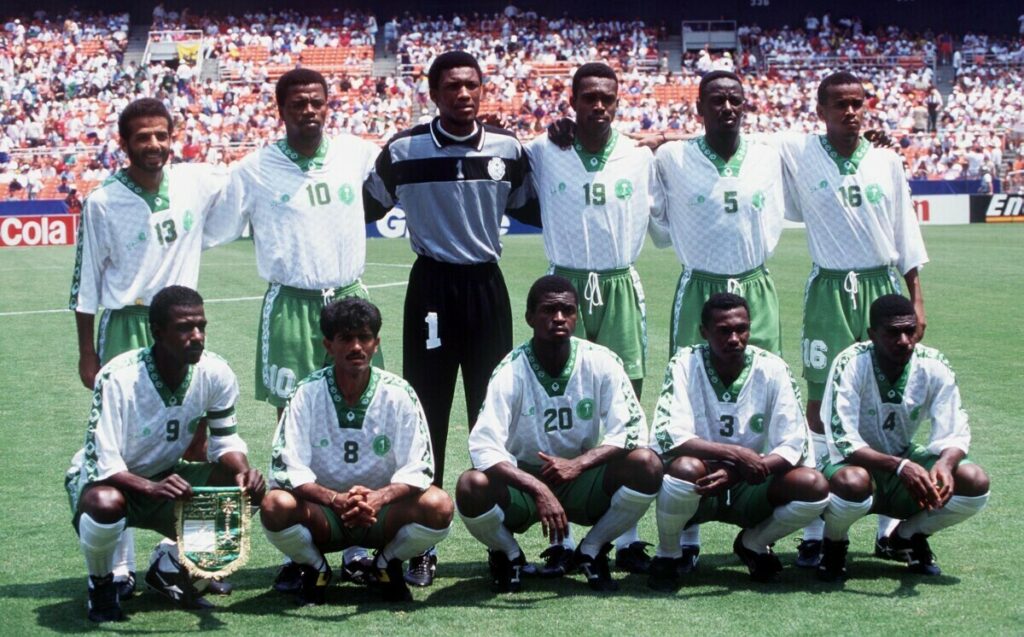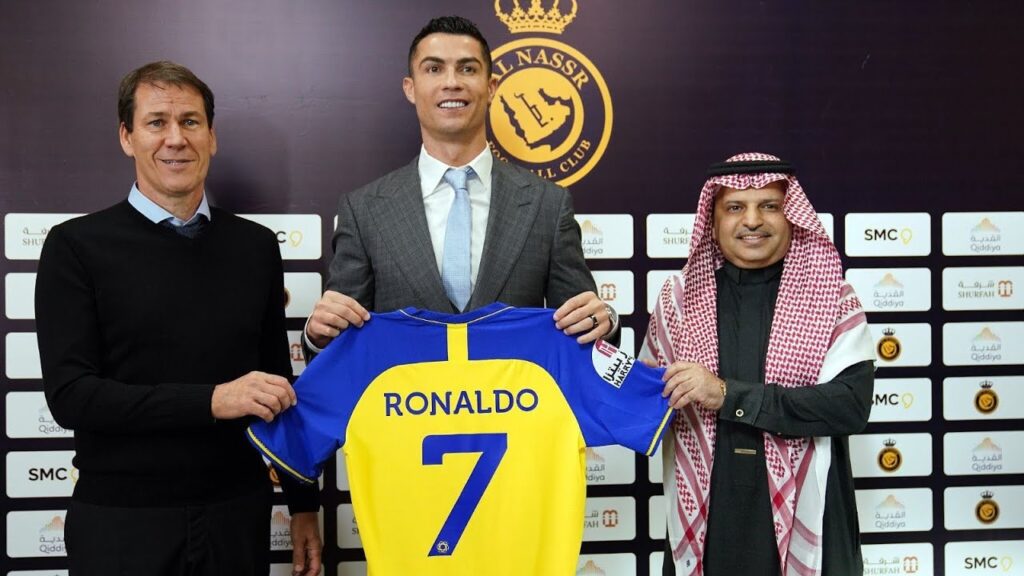Remember the 1994 World Cup in the United States? Saudi Arabia, a team no one expected to go far, takes on Belgium. Then it happens—Saeed Al-Owairan picks up the ball deep in his own half, weaves past five defenders like they’re training cones, and scores one of the most iconic goals in football history. It wasn’t just a goal; it was a statement. Saudi Arabia had arrived on the world stage.
Fast forward to today, they are dominating the football world on a whole new level. But how they got here, what’s going on now, and what it all means for the future of football in Asia, Europe, and beyond.
A Brief History of Saudi Football
Alright, first things first—Saudi Arabia’s relationship with football didn’t just start yesterday. It’s been around for decades. Football became the country’s favorite sport in the 1950s and 60s, and it’s been growing ever since. By the 1980s, the Saudi national team started making waves, and in 1984, they won the AFC Asian Cup.
Then came the 1994 World Cup in the US. Saudi Arabia made their debut, and boy, did they make an impression! Remember Saeed Al-Owairan’s legendary goal against Belgium we talked about earlier? They made it to the Round of 16 that year, and suddenly, the world was paying attention.
Domestically, Saudi clubs have always been powerhouses in Asian football. Teams like Al-Hilal, Al-Ittihad have dominated the AFC Champions League, bringing home multiple titles. Al-Hilal, in particular, has been a beast, with a record number of trophies in the competition. So yeah, Saudi Arabia’s football scene has been legit for a long time.

The Current Boom
Now let’s fast-forward to today. Something huge is happening. Saudi Arabia isn’t just playing football—they’re taking over the game. It started with the Saudi Pro League—their domestic league—which has been attracting big-name players like it’s the 2009 version of FIFA Ultimate Team.
Cristiano Ronaldo kicked things off when he joined Al-Nassr. Then came Karim Benzema, N’Golo Kanté, and Neymar. Oh, and don’t forget about younger talents too—Saudi clubs are throwing cash at players in their prime, not just stars at the end of their careers. They’re basically saying, “If you’re good, we’ve got a blank check.”
And it’s not just about the players. They’re investing in coaches, training facilities, and even referees to elevate the quality of their league. The goal? To make the Saudi Pro League one of the top leagues in the world. Ambitious? Absolutely. But with the kind of money they’re spending, you can’t dismiss it.

Buying European Clubs
Here’s where things get even more interesting. Saudi Arabia isn’t just building up their league—they’re buying into European football too. The Saudi Public Investment Fund, which has essentially bottomless pockets, already owns Newcastle United in the Premier League. And rumor has it, they’re not stopping there.
Think about it. By owning clubs in Europe, they’re not just influencing football at home but also on the global stage. Newcastle is already climbing the ranks in England, and if Saudi investors grab more clubs, their footprint in European football will only grow.

The 2034 World Cup
Saudi Arabia has officially secured the hosting rights for the 2034 FIFA World Cup. This is HUGE. Hosting the World Cup isn’t just about having stadiums; it’s about putting your country on the map as a football powerhouse.
Think about what Qatar did in 2022. They built insane stadiums, created a global spectacle, and drew attention to their league. Saudi Arabia is looking to do the same—but on an even bigger scale. They’ve already got state-of-the-art stadiums and infrastructure, and with the World Cup on the horizon, you can bet they’ll be pulling out all the stops.

What This Means for Asian Football
So, what does all this mean for football in Asia? For starters, the Saudi Pro League is raising the bar for other leagues in the region. Countries like Japan, South Korea, and China have strong leagues, but Saudi Arabia is setting a new standard. The influx of top talent will not only boost the league but also elevate the level of competition in Asian tournaments like the AFC Champions League.
It’s also a wake-up call for other Asian football federations. If they don’t step up their game, they risk falling behind. Saudi Arabia is showing that with enough investment and vision, you can turn your league into a global attraction.

Impact on European Football
Now, let’s talk about Europe. Saudi Arabia’s rise in football isn’t going unnoticed by European clubs and leagues. For years, Europe has been the epicenter of football, but now they’ve got serious competition. The Saudi Pro League isn’t just poaching players; it’s changing the economics of the sport.
When players see the kind of money they can make in Saudi Arabia, it forces European clubs to rethink their strategies. Can they keep their stars? Can they match those salaries? It’s a game-changer. Plus, with Saudi ownership in European clubs, they’re blurring the lines between the two football worlds.
The Bigger Picture
Alright, let’s zoom out for a second. Why is Saudi Arabia doing all this? It’s not just about football. This is part of a much larger strategy called Vision 2030. Saudi Arabia is trying to diversify its economy and reduce its reliance on oil. Sports—and football in particular—are a key part of that plan. By investing in football, they’re boosting tourism, creating jobs, and building a new global image for the country.
But it’s not without controversy. Critics argue that this is “sportswashing,” a way to distract from issues like human rights. It’s a valid point, and it’s something we can’t ignore. But from a football perspective, it’s undeniable that Saudi Arabia is making waves.
What’s Next?
So, what’s next for Saudi football? Well, don’t expect them to slow down. They’ve got the momentum, the money, and the ambition to keep pushing forward. The 2034 World Cup will be a major milestone, but it’s clear they’re playing the long game.
But with all this investment and star power flooding in, one big question remains: Is Middle Eastern money ruining the beautiful game?

